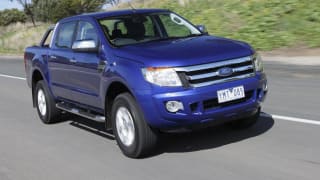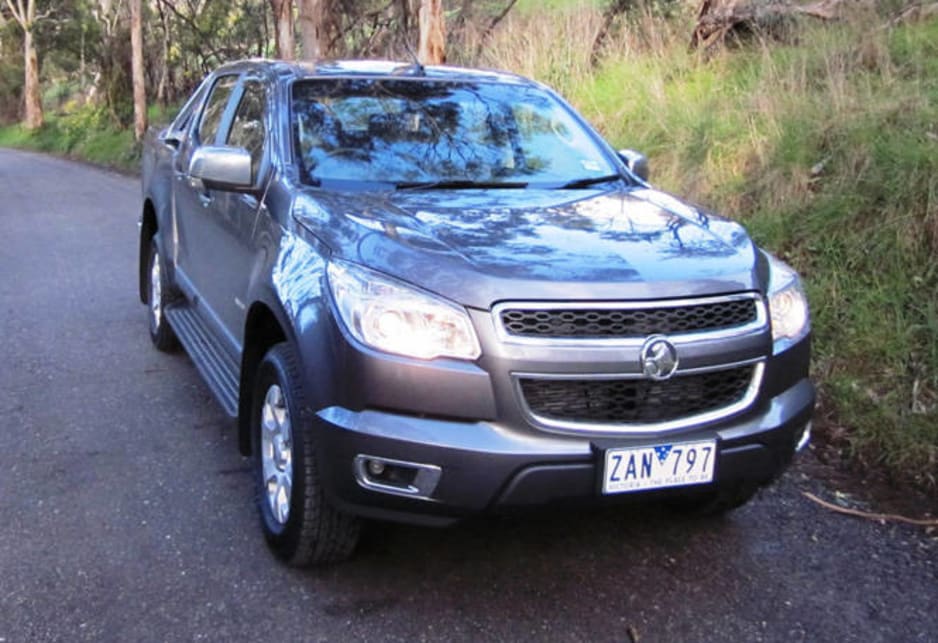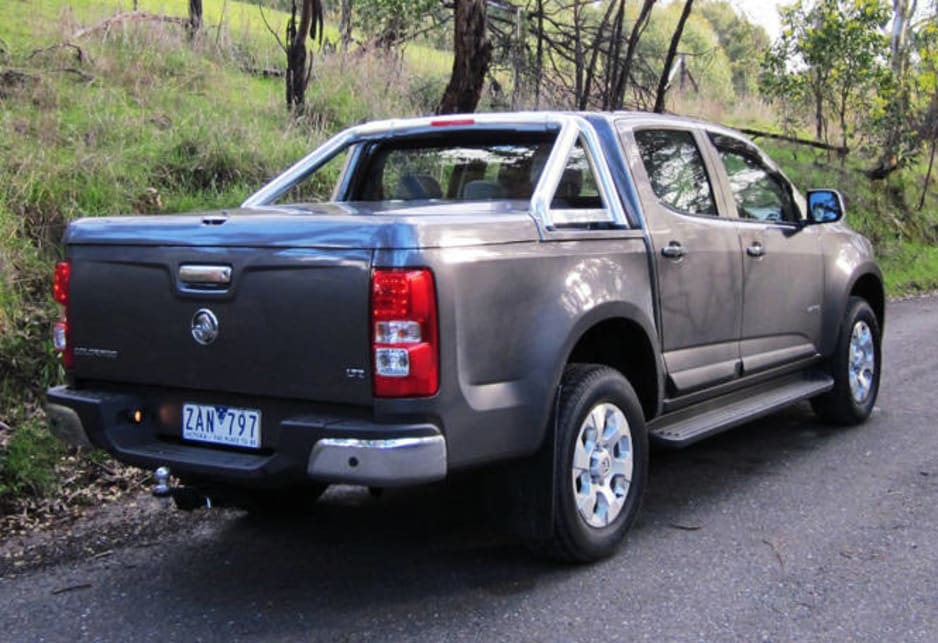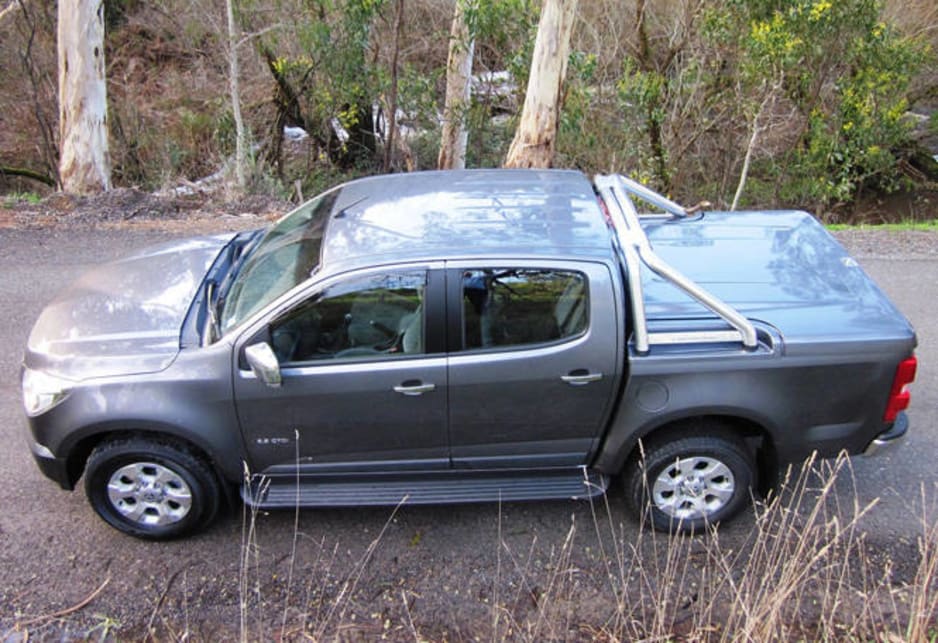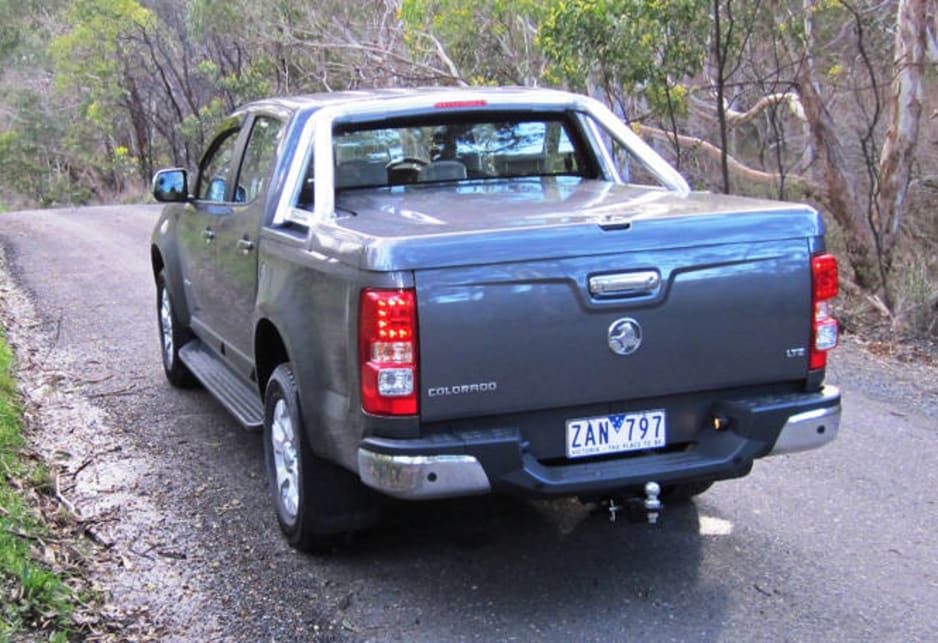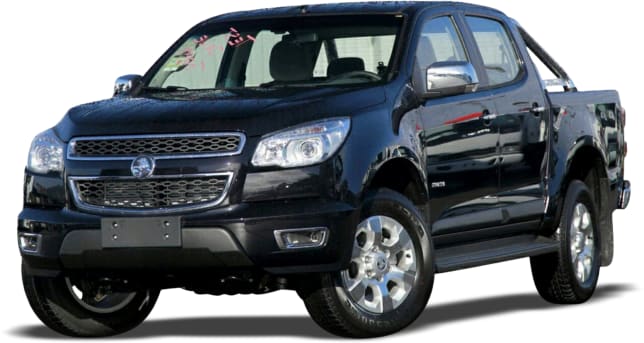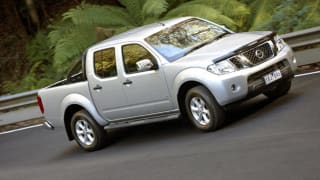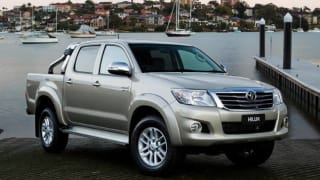Big, broad and ready to work, but ride height is no longer a clue to the drivetrain.
Light-commercial buyers opting for rear instead of four-wheel drive won't get an inferiority complex from being looked down upon - quite literally - by the 4WD ute brigade. Ford has the Hi-Rider Ranger and the new Colorado 4x2 range sits in a similarly lofty position to its 4x4 sibling, just don't go marauding into a big mud bog while hunting for the (absent) rotary 4WD on-the-go switch.
Value
The dual-cab LTZ five-speed manual is priced from $40,990 - $9000 cheaper than its 4WD equivalent, which is about par for the course in the segment. The flagship LTZ sits on chunky 17in alloy wheels, with a full-size spare, front fog lamps, power-adjustable and folding external rearvision mirrors, a soft tonneau cover (although the test car has the hard cover, for $2520), an alloy sports rollbar, side steps.
Explore the 2012 Holden Colorado range
There's also cloth trim, bucket seats, driver gets electric adjustment, single zone climate control, power windows, three in-cabin 12v outlets, LED tail lights, Bluetooth, cruise control, trip computer, leather-wrapped steering wheel and gearshift, eight-speaker sound system and wheel-mounted controls for the phone, sound and cruise control systems.
Technology
The light-commercial brigade is not at the forefront of new technology - the rear leaf springs in the suspension date back to Cobb and Co horse-drawn mail wagons - but the segment has some up-to-date equipment. The 4x2 is about 53kg lighter than its 4WD sibling but is propelled by the same powerplant - a 2.8-litre double-overhead cam turbodiesel four-cylinder, an old-school turbodiesel.
The five-speed manual has to make do with less torque - 440Nm - but the same 132kW power figure. It's an iron engine block with an alloy head, fed by common-rail direct-injection using a variable-geometry turbocharger. The turbodiesel also has an electronic throttle valve and a cooled exhaust gas recirculation system to cut down reduce exhaust emissions.
While a five-speed manual gearbox might seem so last year compared to the six-speed auto, it is 1.2l/100km less thirsty than the auto, a gap that was borne out after our time in the car. The 4x2 manual returned 9.6l/100km, not quite the ADR number of 7.8; it's also claiming to be 0.1l/100km less thirsty than the 4WD equivalent.
Design
This is no prissy-looker, as the General has taken a similar path to Ford's Ranger, giving it a strong, square look that says it's ready to shoulder a load. The flanks and rump are generic dual-cab ute - the top-spec Colorado comes standard with side-steps, the alloy sports ropllover bar and a soft tonneau cover that allows better use of the rear tray.
The test car had the hard tonneau, which offers better security (it and the tailgate are key-lockable, although not with the same key) but offers less loadspace flexibility. The interior is good without being outstanding - the seats are comfortable and the driver gets electric adjustment (but tilt-only steering), decent amounts of in-cabin storage and three 12v outlets - two in the front, one in the back - but no vents for backseat passengers. Surely it gets hot in Brazil?
Safety
Holden is making hay will it has five shiny stars for Colorado's ANCAP rating, which is a big step up from the old car's two-star result. The safety features list includes dual front airbags (but no front-side airbags) and full length curtain airbags, stability and traction control, anti-lock brakes (with rear drums) with electronic brakeforce distribution and hydraulic brake assist.
Holden does get points for three childseat top-tether anchor points in a useful position high behind the back seat, which makes them easier to utilise. Some of its opposition have the fixture points in difficult-to-reach places that make it hard work for the ute to double as weekend family transport.
Driving
Having stepped out of a 4x4 LT into the 4x2 LTZ and not being hugely impressed with the LT, I wasn't expecting the manual rear-driver to be much different. It wasn't. The ride quality hadn't suffered for the upsized wheel/tyre package and the cabin has enough room and is a comfortable place to spend time.
The Colorado's powerplant is still on the noisy side and can get a little bogged down if you don't keep the revs up to it.
It suffers from numb steering, a large turning circle and too many turns lock-to-lock and the handling is not up the segment leaders. The five-speed manual feels as though it teams more effectively with the engine than the auto - the change is not going on any sportscar benchmark lists but there's less drivetrain snatch that afflicts some of the other key players in the segment, particularly when there's a fair load of torque going through the driveline.
Fuel economy and sharp pricetag help soften the average first impressions of the Colorado, as do the five-star crash test rating, the one-tonne payload and 3.5-tonne braked towing capacity. Once up and cruising on the open road the big ute lopes along reasonably well, offering good visibility through the front and from the external mirrors - the mirrors on the Commodore that followed (that look small at the best of times) look even smaller by comparison.
Despite only driving through the rear, the LTZ didn't dislike unsealed surfaces and didn't suffer the tail-happy habits of some of its opposition in the same terrain, even with electronic nursemaids on a break and some provocation. The Colorado ute is not a bad vehicle, it's just that when you consider the US$2 million development budget - twice what Holden had for the VE Commodore program - there was an expectation it would be a bigger step forward, and it's not.
